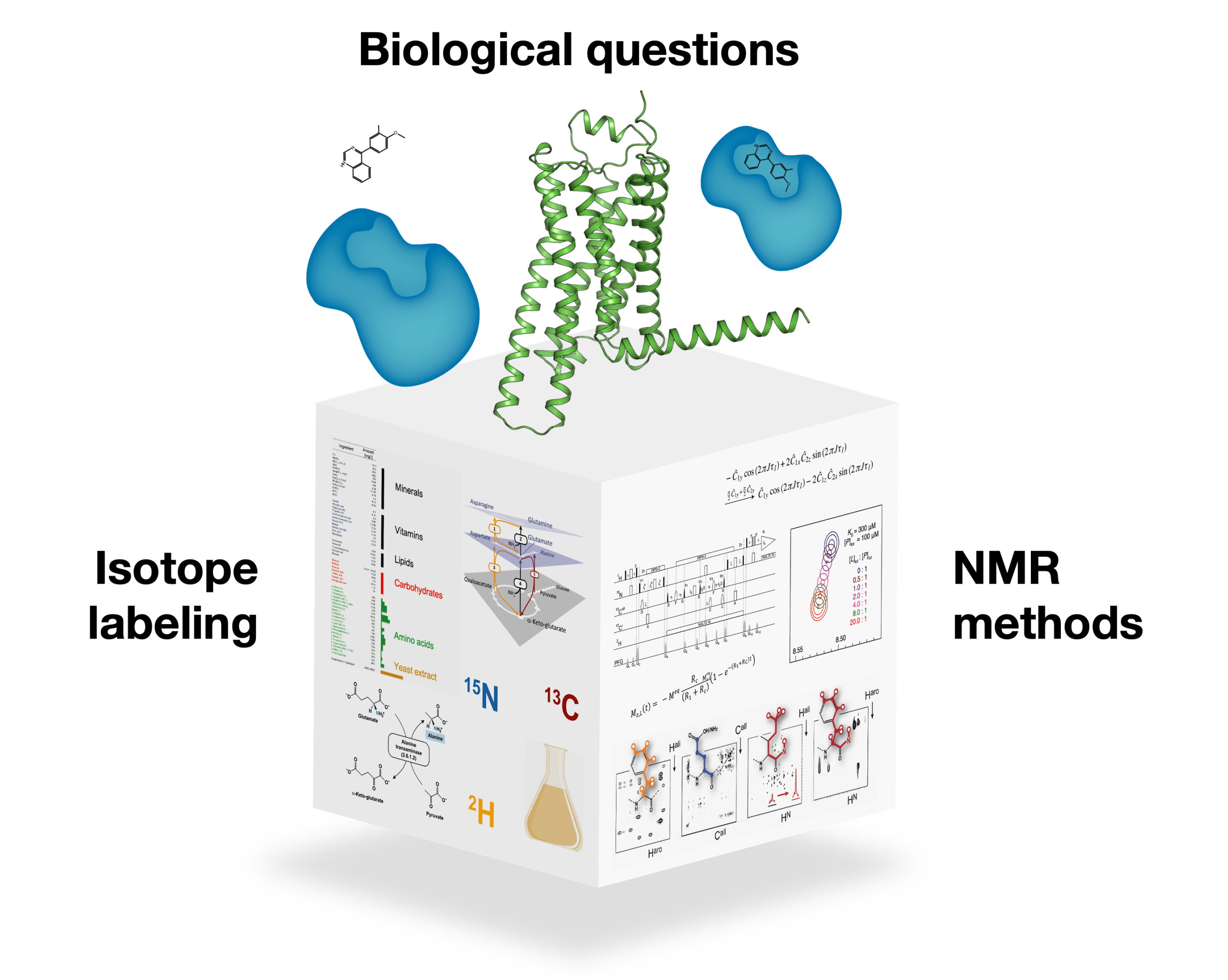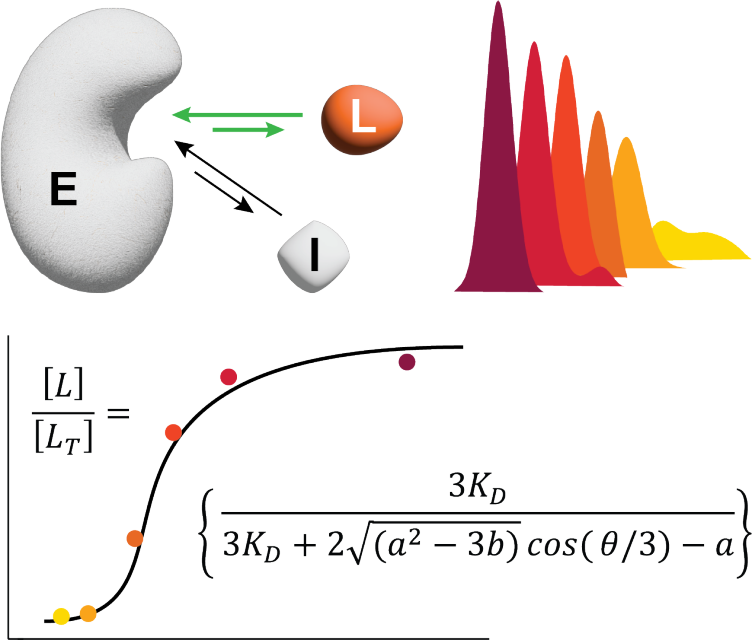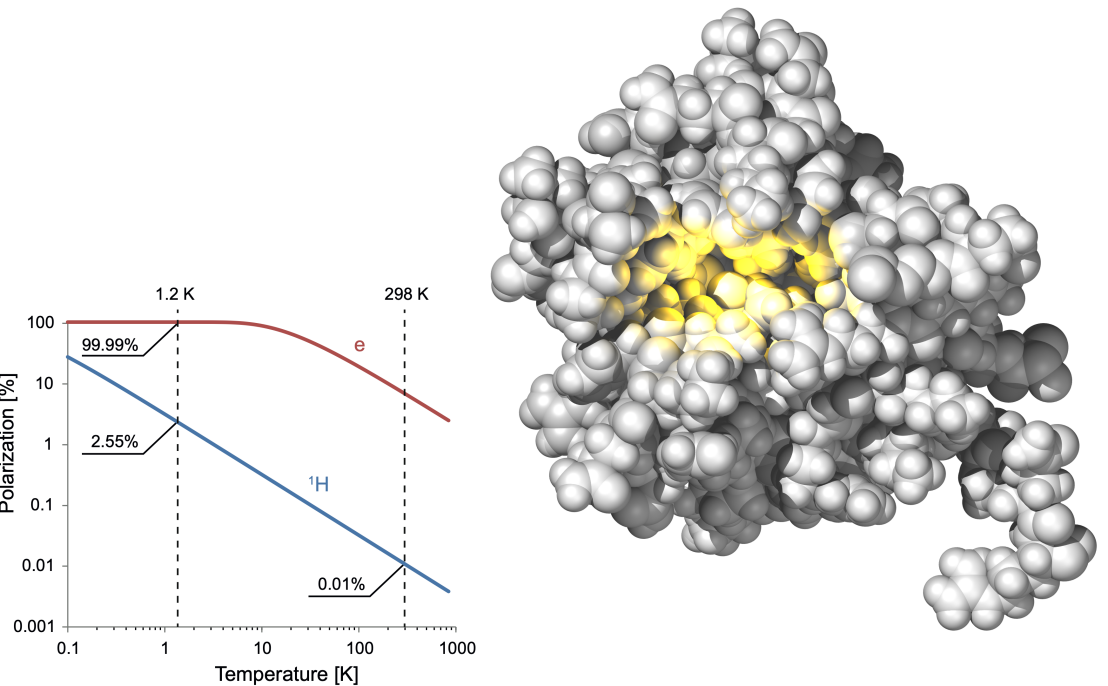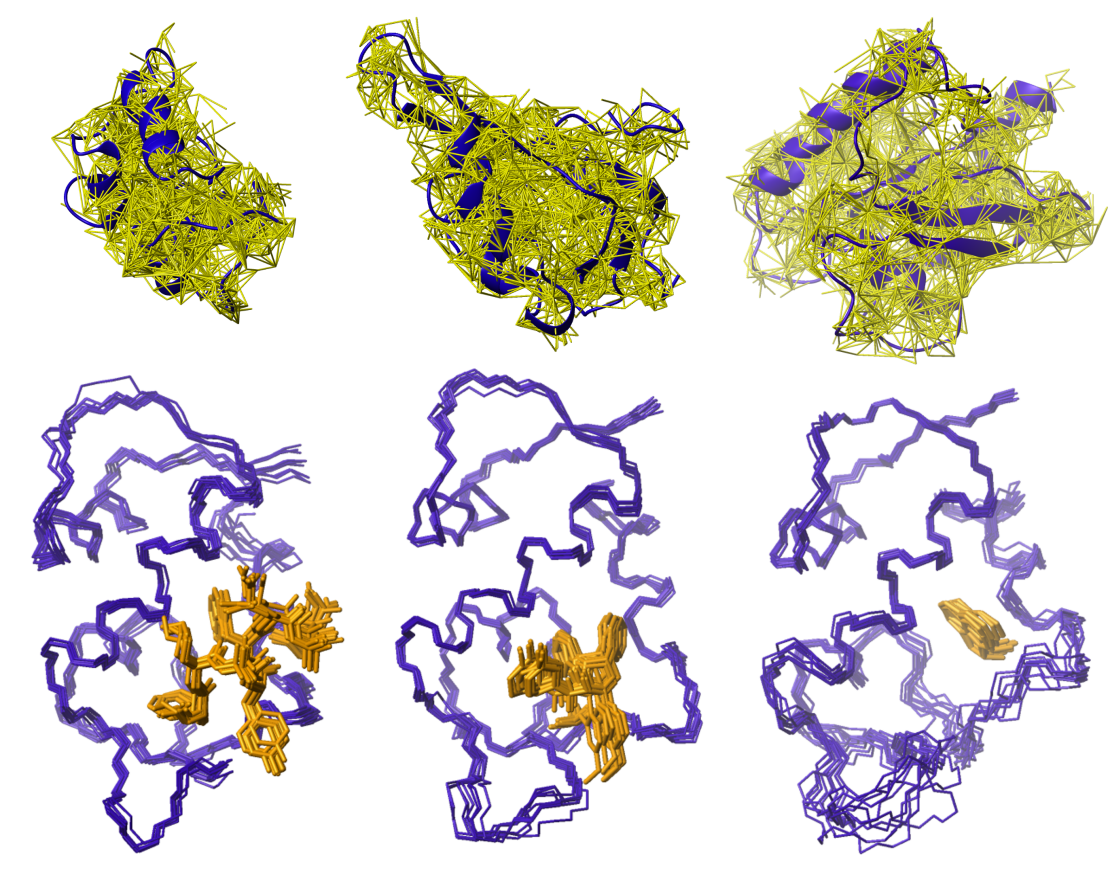Gossert Group Research
NMR method development to understand biological processes at the molecular level and to find new ways of treating diseases.

In our laboratory, we want to understand human diseases and their potential treatment at the molecular level. At the center of every disease, there is a malfunctioning biomolecular machine, a protein for instance. To treat a disease, therefore the preferred approach is designing another type of molecule, a drug, which interferes at the microscopic level and ideally cures the disease.
To gain insights at the atomic level, we use nuclear magnetic resonance (NMR), a fascinating technique which is invaluable for examining molecules in solution: with NMR we can observe the target protein and potential drugs with great detail and examine a multitude of facets of their interactions.
With these tools we aim at finding novel approaches for drug design for particularly difficult targets.
Projects:
Understanding GPCR biology at the molecular level
Adrenalin receptors are among the most important drug targets for diseases like hypertension or pulmonary diseases. We seek to understand their activation and inactivation in molecular detail: the subtle conformational changes of the receptor upon activation or inactivation, the interactions with multiple interaction partners like G-proteins, and the details of the complicated desensitization of the receptor by kinases of the GRK family.
We specialize on developing protocols for producing proteins in eukaryotic cells like insect cells and mammalian cells, which make it possible to produce the most difficult human proteins for NMR studies.
At the same time, we develop NMR techniques to work with large proteins.
Novel approaches for NMR-based drug design

NMR can assist the drug discovery process at many stages: starting with screening for potential ligands over validating initial screening hits to characterizing validated ligands in terms of their affinity. We design innovative compound libraries for fragment screening with a particular focus on 19F-NMR and develop methods for immediate affinity-ranking of screening hits. At the same time we expand the applicability of NMR binding experiments to membrane proteins. Further we work on expanding the limits for affinity determination by NMR to higher affinity, with the aim of establishing assays that don’t require radioactive or fluorescent ligands.
Hyperpolarization for drug discovery

While NMR is the biophysical technique with the arguably highest information content, its sensitivity is notoriously low and long experimental hours are required to access different pieces of information. We thus explore the application of hyperpolarization techniques for drug discovery. Our aim is to not just increase throughput, but to exploit the high information content that NMR offers in simple and fast experiments. Instead of the tedious sequence of binding screening and validation, subsequent affinity determination and final binding site characterization, we aim at determining all at once.
Structure determination of biomolecules and their complexes

For drug development, few things are more informative than a 3D structure of the protein-ligand complex or – for more complicated macrocyclic drugs – also the structure of the free ligand in different environments. Here, we develop efficient NMR techniques that allow more detailed insights into molecular structure, which can be used to optimize drugs towards target binding or membrane permeability.
Research of other Users of the BNSP
Detailed information on ongoing research of the users of the BNSP can be found on the groups' websites:
Research in Prof. F. Allain's group
